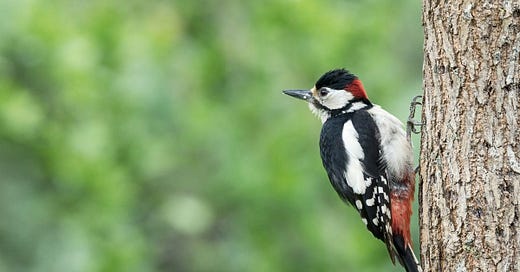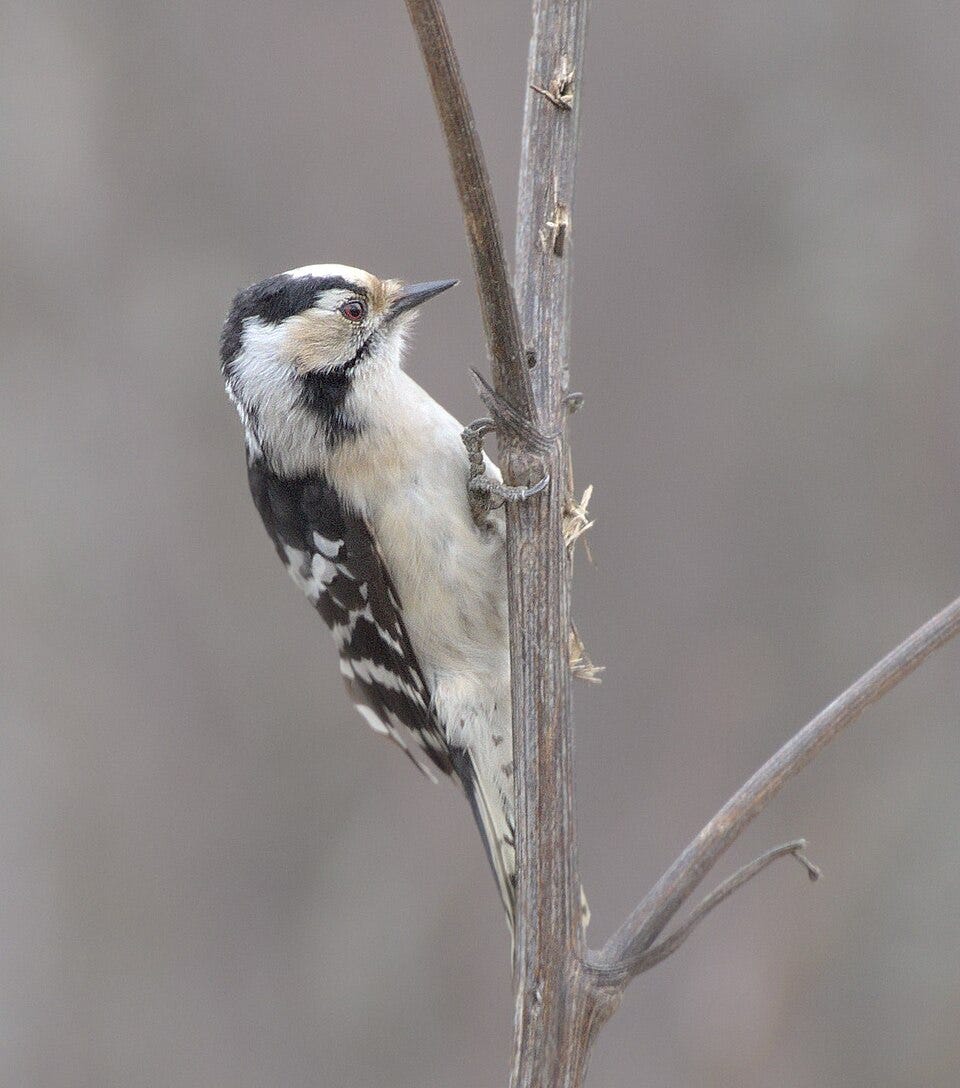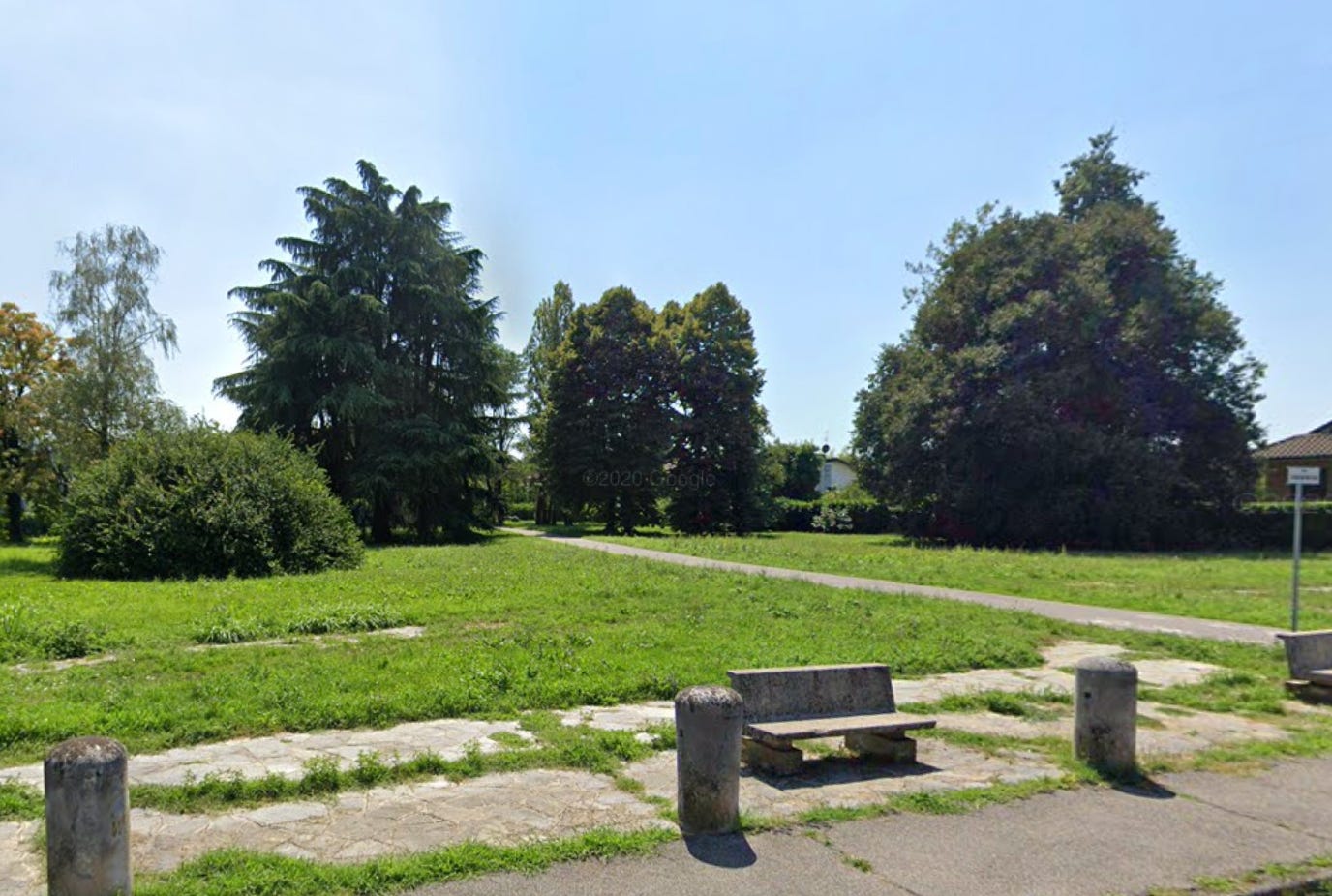Recently I was walking in a local park and heard the characteristic drumming sound of a woodpecker.
(I live in a town outside Milan, Italy).
I’d only heard it a few times in my life. And it always makes me smile.
I scanned the trees around me and spotted not one but three lesser spotted woodpeckers clambering around a tree and pecking at the wood.
A moment later they flew off.
It was an encounter that lasted only a few seconds but it brought such a level of joy to my day that I can’t stop telling people ‘I saw three woodpeckers all at once!’.
Since then I’ve seen woodpeckers in the park several times but usually only one at a time.
It got me thinking: why is it that this small urban park could host three of these charismatic birds whereas, in my three decades of living in Ireland and England, I never saw even one.
The obvious answer is that Italy is simply more biodiverse than Ireland and Britain. And it is.
But let’s examine what the presence of woodpeckers might indicate about the ecosystem health of my town. In the process we’ll learn an important lesson about fostering urban biodiversity.
Lesser spotted woodpeckers are woodland specialists. They need mature trees and deadwood to forage and nest. They feed on tree-living insects and find tasty larvae by drumming on wood. They nest in holes in mature trees, often creating the cavities themselves.
These woodpeckers have declined significantly in Britain since 1970, alongside many other species. But globally, they are a species of ‘least concern’, meaning their populations are likely healthy.
They’re considered absent from Ireland, although I haven’t figured out if that is due to local extinction or if they just never made it across the Irish sea.
The loss of broadleaved woodland habitat is the likely explanation for the decline in their numbers in Britain.
In contrast, over the last century, forest cover in Italy has doubled to cover almost 40% of the country. This is largely due to farm abandonment in areas with low productivity.
This helps explain why lesser spotted woodpecker numbers are not so challenged in Italy. And why we might see a few venturing in to cities from surrounding woodlands.
In Milan’s case, the inverse might actually be true. The Padana plain surrounding Milan is famously not wooded. It’s dominated by arable agriculture with very few and small parcels of woodland.
It’s possible that some populations of this woodpecker clung on in pockets of remaining habitat and then migrated into urban neighbourhoods where tree cover is actually higher than the surrounding farmland.
And so we come back to my town. It’s a fairly nondescript place, largely built out in the 1960s-1980s. Something special about it is the large number of mature trees that fill the courtyards and open spaces around apartment buildings.
It seems that this habitat, which has no woodland structure to speak of and contains many exotic tree species, provides exactly that the lesser spotted woodpecker needs: a high canopy and enough deadwood to nest and forage.
And then there is the next ingredient: insects.
I don’t have data to quantify this so you’ll just have to trust me. The number and range of insects in my little town in Italy is staggeringly higher than anywhere I experienced in Ireland or the UK - rural or urban.
I have a couple of theories on why this is.
I’ve never seen pesticides being sprayed, whereas many British local authorities do spray pesticides in urban areas. Madness, I know.
This may help to explain why, even in managed urban parks in my town, the richness and diversity of flowering plants (some would call them weeds) is huge. Check out the photos below.
Grass areas are also often left to grow long, being mown at most once a month and sometimes much less. This contrasts with the classic ‘snooker table’ aesthetic of most British parks.
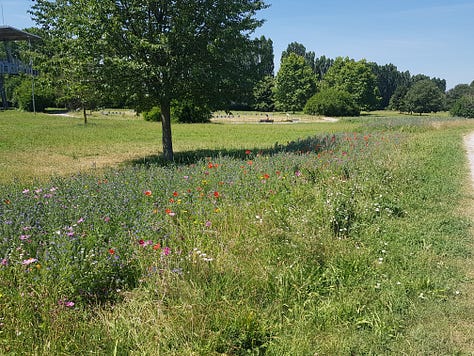
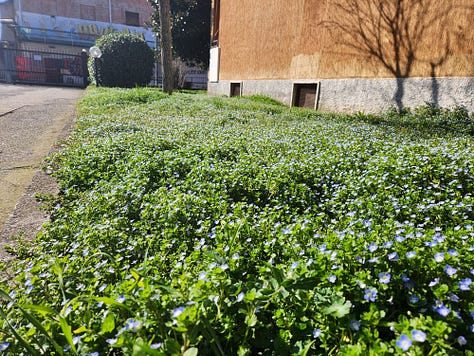
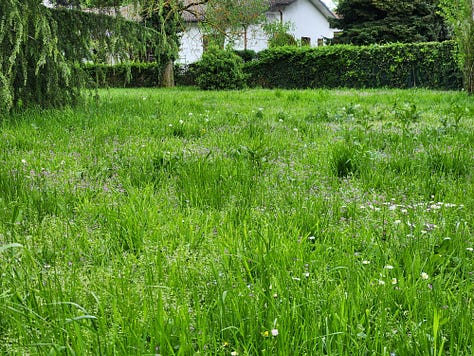
What’s this got to do with woodpeckers?
The combination of mature trees and rich grasslands provide habitat for insects that woodpeckers feed on, such as ants, moths and beetles.
For instance, some moth species are pollinators and need flowers for feeding as adults. They then lay their larvae on trees, which are a food source for lesser spotted woodpeckers.
If you only have trees or grassland, it may not be enough for insects and woodpeckers to thrive.
This tells us something that is often missing from urban biodiversity plans:
We need a complex mosaic of habitats for many species to complete their lifecycles. Just putting up bird boxes or bee hotels is not enough if we are also spraying pesticide, weeding and removing deadwood.
In other words, we need to let go of some control, allow spaces to become wilder and nature will surprise us.
So, next time you see a woodpecker, think about the ecological complexity that is needed for them to thrive.
And remember that thousands of other species also rely on complex, healthy ecosystems.
Is your town or city providing that?

